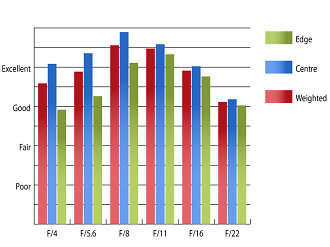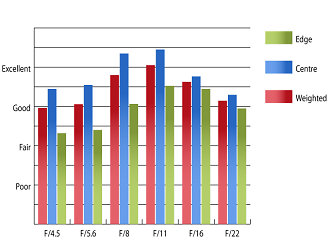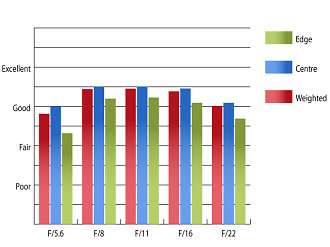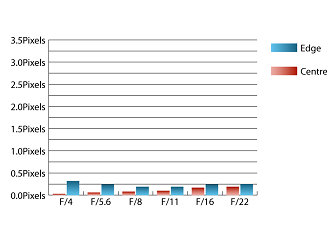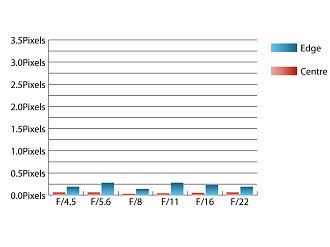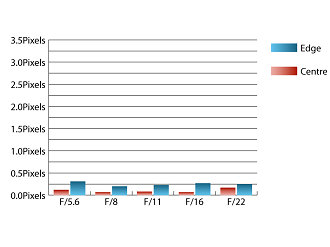Nikon AF-S DX Nikkor 55-200mm f/4-5.6G VR II Review
Nikon AF-S DX Nikkor 55-200mm f/4–5.6G VR II Performance
At maximum aperture and 55mm, sharpness is excellent in the centre and falls just short of good levels towards the edges of the frame. Stopping down improves performance across the frame, with peak sharpness being achieved at f/8. Here clarity is outstanding in the centre and excellent towards the edges of the frame.
Zooming to 105mm results in a reduction of performance at maximum aperture. Here sharpness is very good in the centre, but can only be considered fair towards the edges of the frame. Stopped down to f/8, performance at this focal length is much improved. Here sharpness is outstanding in the centre and good towards the edges of the frame.
Finally, at 200mm sharpness falls further, with good clarity being produced in the centre of the frame and fair performance towards the edges. Stopping down to between f/8 and f/16 results in very good sharpness in the centre and good clarity towards the edges of the frame.
How to read our charts
The blue column represents readings from the centre of the picture frame at the various apertures and the green is from the edges. Averaging them out gives the red weighted column.The scale on the left side is an indication of actual image resolution. The taller the column, the better the lens performance. Simple.
For this review, the lens was tested on a Nikon D5500 using Imatest.
Levels of chromatic aberrations are remarkably well controlled, barely exceeding a quarter of a pixel width at any point in the zoom range. This low level of fringing should barely be visible, even in large reproductions and harsh crops from the edges of the frame.
How to read our charts
Chromatic aberration is the lens' inability to focus on the sensor or film all colours of visible light at the same point. Severe chromatic aberration gives a noticeable fringing or a halo effect around sharp edges within the picture. It can be cured in software.Apochromatic lenses have special lens elements (aspheric, extra-low dispersion etc) to minimize the problem, hence they usually cost more.
For this review, the lens was tested on a Nikon D5500 using Imatest.
Falloff of illumination towards the corners of the frame is well controlled for a lens of this range and maximum aperture. Throughout the zoom range the corners are 0.9 stops darker than the image centre at maximum aperture and visually uniform illumination is achieved stopped down by one full stop .
Distortion is also well controlled for a lens of this type with 0.47% barrel distortion present at 55mm, which gives way to 1.16% pincushion distortion at 200mm. If straight lines are paramount, you'll be glad to hear that the distortion pattern is uniform across the frame, which should make applying corrections in image editing software relatively straightforward.
This lens is quite resistant to flare, and contrast holds up well when shooting into the light.
Nikon AF-S DX Nikkor 55-200mm f/4–5.6G VR II Value For Money
With a price of around £270, this lens seems quite expensive, especially as its non-collapsible predecessor is still available for around £100 less. That's no small saving. In fact, for a little extra reach, you can pick up Nikon's 55-300mm lens for £250, which is still less than what this lens sell for.
Add your message
Please login here or if you've not registered, you can register here. Registering is safe, quick and free.
photodo Stats
428 MTF tests
74 in-depth photodo reviews
100+ users join each day
Help the lens community by reviewing or rating a lens today via our lens search
Latest Lens Reviews
- Chinon 28mm f/2.8 Vintage Lens Review
- Canon EF 70-200mm f/4L IS II USM Lens Review
- Samyang AF 85mm f/1.4 EF Review
- Sigma 70mm f/2.8 DG Macro Art Review
- Samyang AF 24mm f/2.8 FE Review
- Meike 50mm f/1.7 Review
- Tamron 70-210mm f/4 Di VC USD Review
- Lensbaby Burnside 35mm f/2.8 Review
- Asahi Super Takumar 50mm f/1.4 Review
- Asahi Super-Multi-Coated Takumar 135mm f/3.5 Review
